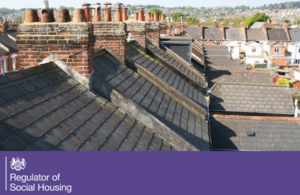RSH publishes latest fire safety remediation report for English social housing
All social landlords are required to submit quarterly data to RSH and the Ministry of Housing, Communities and Local Government on the fire safety remediation of relevant buildings for which they are responsible.

Today the Regulator of Social Housing published the findings from its latest quarterly survey on the fire safety of 11 metre plus buildings in the social housing sector.
All social landlords are required to submit quarterly data to RSH and the Ministry of Housing, Communities and Local Government on the fire safety remediation of relevant buildings for which they are responsible.
Of the 17,457 relevant buildings reported, 99% had had fire risk assessments undertaken and 11% were found to have a life critical fire safety (LCFS) defect relating to the external wall system (EWS). The vast majority of relevant buildings (88%) had no LCFS defects.
11% of the 1,932 affected buildings are due to have remedial work completed within the next six months, and 84% are expected to complete in the next five years.
Some landlords with multiple affected buildings have indicated they are prioritising works on higher risk buildings, which can be more complex and take longer to remediate.
As such, landlords have a duty to put interim measures in place to ensure the safety of tenants until works are fully completed.
RSH will continue to monitor the performance of landlords in remediating 11 metre plus buildings and the progress they are making against their plans.
Social landlords must have robust systems and processes in place on fire safety and its management, underpinned by accurate and up to date data. This is a key aspect of landlords ensuring that tenants are safe in their homes.
Will Perry, Director of Strategy at RSH, said:
This quarterly survey is an important tool in helping us monitor the progress being made by the sector on remediating fire safety defects. Fire safety is a fundamental responsibility and we expect all landlords to take prompt and effective action so that tenants can feel safe in their homes.
This includes putting mitigating measures in place to protect tenants from any risks in the interim period before works are complete. Boards and councillors have a duty to ensure these plans are delivered.
Meanwhile our ongoing regulation, including our programme of inspections and responsive engagement, helps us check that landlords are meeting the outcomes of our standards – including those relating to fire safety.
Notes to editors
-
The data referred to in this publication was reported in the Q1 2024/2025 survey which ran from 21 June 2024 to 19 July 2024 with data being reported as at 30 June.
-
29% (431) of landlords reported being responsible for at least one relevant building in this quarter. The majority of these were large landlords (those with 1,000 or more units).
- Work had completed and been signed off by building control on 51 (2.6%) of buildings, which are waiting for a follow up fire assessment.
- Work has already started or is complete on more than of a third of affected buildings however plans were missing or unclear for 535 buildings, equivalent to over a quarter.
- Landlords have said previously that this is due to a range of factors including navigating complex legal arrangements with freeholders and leaseholders, difficulties sourcing contractors and supply chain delays.
- The survey required landlords to provide aggregate level information to RSH for all 11 metre plus buildings where they are the responsible entity. In addition, landlords were asked to submit fire safety remediation data at an individual building level for assessment by MHCLG.
- LCFS are defined as defects, shrinkages, faults or other failings in a building that give rise to fire safety risks identified by a Fire Risk Appraisal of External Wall construction or a fire risk assessment (or equivalent) undertaken to industry standards.
For general enquiries email enquiries@rsh.gov.uk. For media enquiries please see our Media Enquiries page.